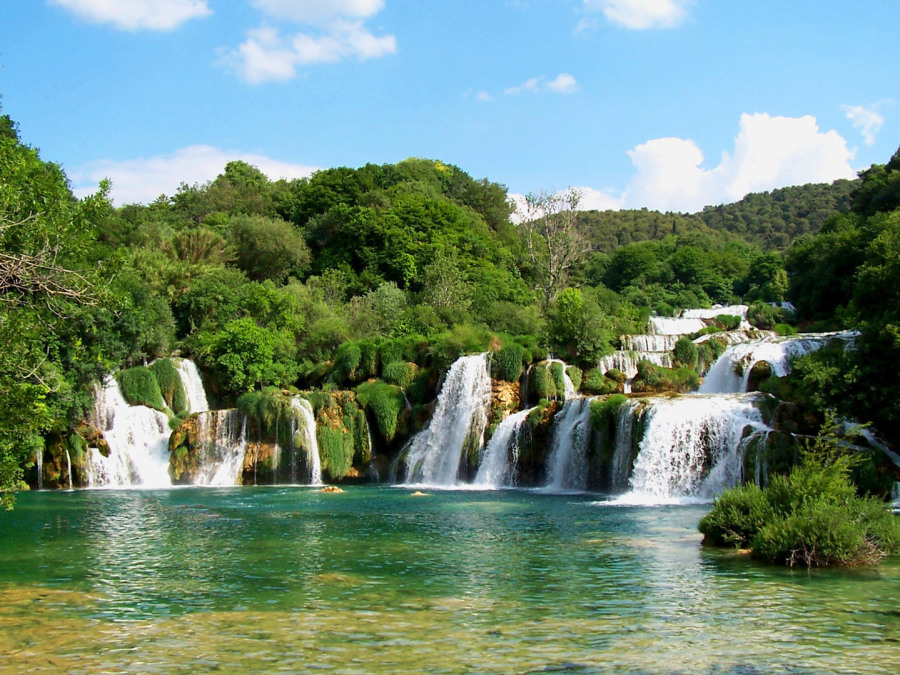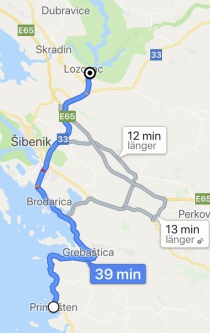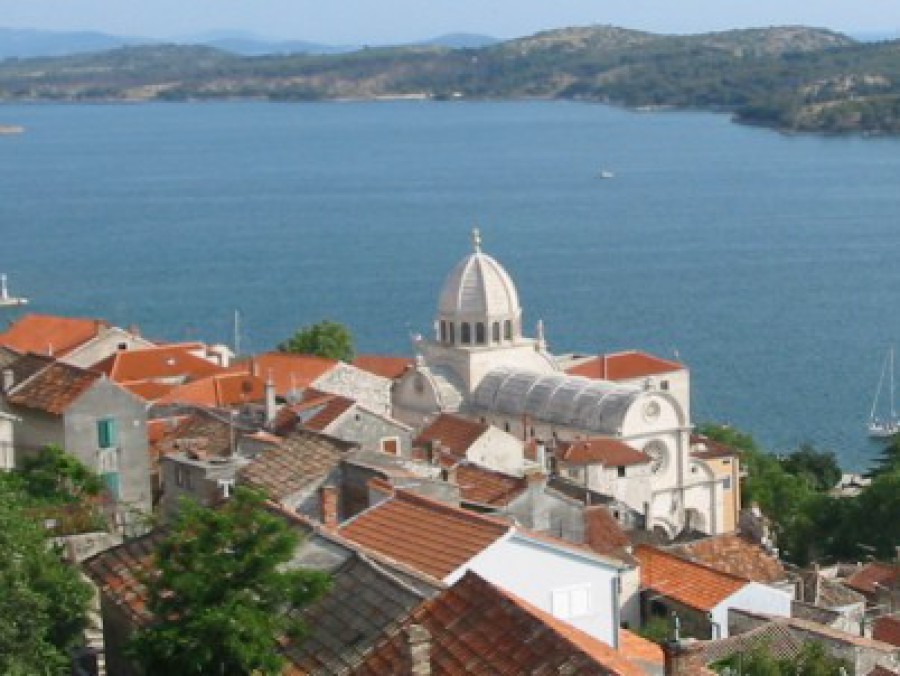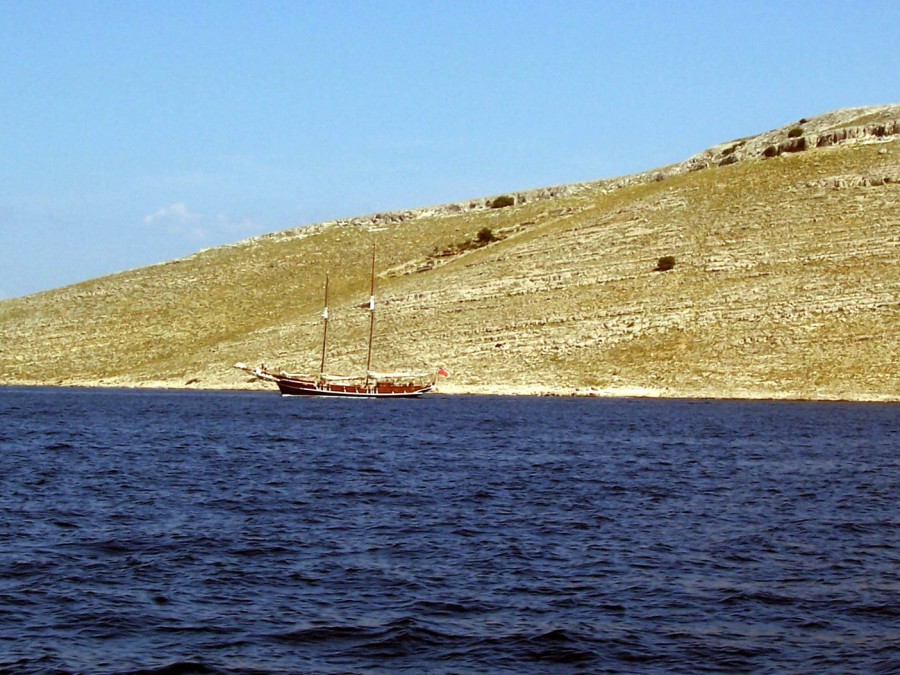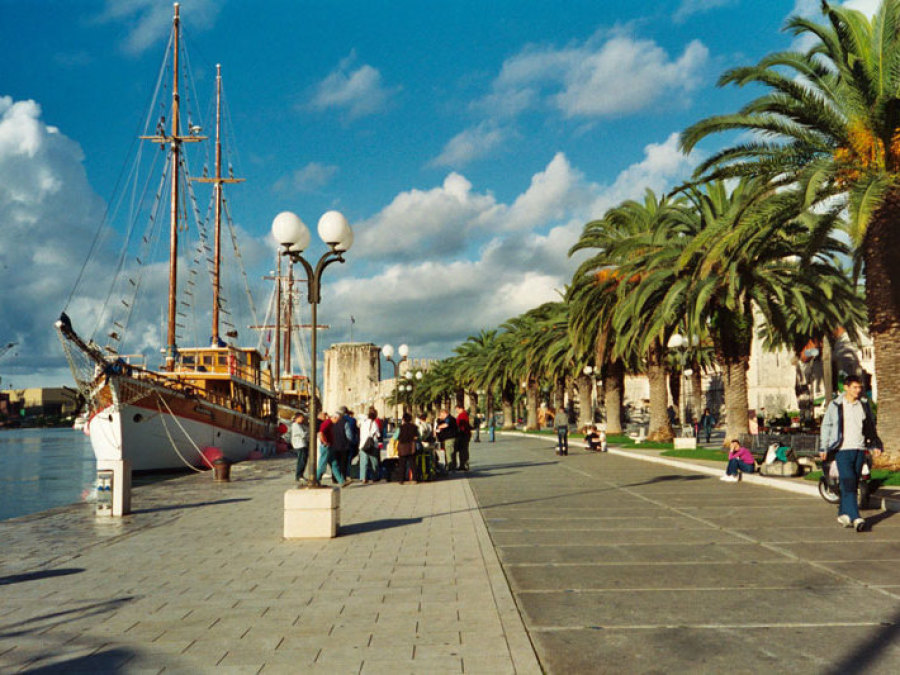Benutzen Sie den unten stehenden Button um eine Karte mit den Ausflugszielen zu öffnen, bzw einen dirkten Link unter jedem Ausflugsziel für zusätzliche Informationen.
Please click below to open a map with the different sightseeing destinations.
KRKA NATIONALPARK
Der Nationalpark Krka befindet sich in Südkroatien, in der Nähe von Šibenik oder aber 70 km von Zadar entfernt. Durch ihn fließt die für ihre 7 Wasserfälle bekannte Krka. Der Wasserfall Skradinski Buk liegt im Süden des Nationalparks, in der Nähe der traditionellen Wassermühlen. Im Norden führt ein Naturpfad an einem weiteren großen Wasserfall, dem Roški Slap, und am Kloster von Krka vorbei, das auf römischen Katakomben errichtet wurde. Auf der Insel Visovac befindet sich das Franziskanerkloster der barmherzigen Muttergottes aus dem 15. Jahrhundert.
KRKA NATIONAL PARK
The Krka National Park is located in southern Croatia, close to Šibenik or about 70 km from Zadar. Through the park flows the river Krka known for her 7 waterfalls. The waterfall Skradinski Buk is located in the south of the national park, near the traditional water mills. In the north, a nature trail leads past another large waterfall, the Roški Slap, and the Krka Monastery, which was built on Roman catacombs. On the island of Visovac is the Franciscan monastery of the Merciful Mother of God from the 15th century.
Šibenik
Šibenik ist eine Stadt an der Adriaküste Kroatiens nur eine kurze Fahrtzeit von Primosten entfernt. Sie ist bekannt als Ausgangspunkt für Fahrten zur Inselgruppe der Kornaten. Die steinerne Kathedrale des Heiligen Jakob aus dem 15. Jahrhundert ist mit 71 gemeißelten Köpfen verziert. In der Nähe befindet sich in dem im 14. Jahrhundert errichteten Fürstenpalast das Museum der Stadt Šibenik. Die aus weißem Stein erbaute Festung St. Michael bietet eine Freiluftbühne mit Blick über die Bucht von Šibenik und die benachbarten Inseln.
Šibenik
Šibenik is a city on the Adriatic coast of Croatia just a short drive from Primosten. It is known as the starting point for trips to the Kornati archipelago. The stone cathedral of Saint James from the 15th century is decorated with 71 carved heads. The Šibenik Museum is located nearby in the 14th-century Prince's Palace. Built of white stone, the fortress of St. Michael offers an open-air stage with views over the bay of Šibenik and the neighboring islands.
KORNATEN
Ein absolutes Muss für jeden Besucher, der Nationalpark der Kornaten umfasst einen ganzen Archipel mit ca. 89 Inseln und Riffen, die auf einer Gesamtfläche von fast 220 Quadratkilometern liegen. Dies ist die größte Anhäufung von Inseln in der Adria und daher auch ein beliebtes Ausflugsziel, das jedem Besucher beinahe unbegrenzte Möglichkeiten sowie einen unvergesslichen Bade- oder Tauchspaß bietet. Die dicht an dicht nebeneinander aus dem Meer ragenden Inseln versprechen traumhafte Badebuchten und immer noch einsame Fleckchen, wo Sie völlig ungestört schwimmen, tauchen oder einfach sonnenbaden oder nur entspannen können.
KORNATI
An absolute must for every visitor, the Kornati National Park covers an entire archipelago of approximately 89 islands and reefs, covering a total area of almost 220 square kilometers. This is the largest cluster of islands in the Adriatic and therefore also a popular destination, offering every visitor almost unlimited opportunities and an unforgettable swimming and diving experience. These islands sticking out of the sea close to each other, promise fantastic bathing bays and still lonely spots, where you can swim, dive or simply sunbathe as well as just relax in peace.
TROGIR
Die gesamte Altstadt von Trogir zählt seit 1997 zum Unesco-Welterbe. Der Ort gilt auch heute noch als herausragendes Beispiel für städtebauliche Kontinuität. Trogir ist eine Stadt an der zentralen Adriaküste. Die sehr gut erhaltene Altstadt ist für ihre Mischung aus Renaissance-, Barock- und Romanikgebäuden bekannt und liegt auf einer kleinen Insel, die über Brücken mit dem Festland und der Insel Čiovo verbunden ist. Die Kathedrale von Trogir aus dem 13. Jahrhundert umfasst die Kapelle des Heiligen Johannes im Renaissancestil und bietet einen traumhaften Blick. Auch Teile der mittelalterlichen Stadtmauer sind noch intakt.
TROGIR
The entire old town of Trogir has been a Unesco World Heritage Site since 1997. The place is still considered as an outstanding example of urban continuity. Trogir is a city on the central Adriatic coast. The well-preserved old town is known for its mix of Renaissance, Baroque and Romanesque buildings and is located on a small island connected by bridges to the mainland and the island of Čiovo. The 13th-century Trogir Cathedral includes the Renaissance-style Chapel of St. John and offers a wonderful view. Parts of the medieval city walls are still intact.
SPLIT
Split, eine Stadt an der dalmatinischen Küste Kroatiens, nur ca. 1 Autostunde von Primošten entfernt, ist auch bekannt für einerseits seine Strände, wie auch den festungsähnlichen Komplex des Diokletianpalastes im Zentrum. Dieser Palast wurde im 4. Jahrhundert vom römischen Kaiser Diokletian errichtet und einst aus Tausenden von Bauwerken bestehend, umfasst die Ruine heute noch mehr als 200 Gebäude. Innerhalb ihrer weißen Steinmauern und unter den Innenhöfen befinden sich die Kathedrale von Split, zahlreiche Geschäfte, Bars, und Cafes. Viele der Gassen in der Altstadt sind Fussgängerzonen und laden zu jeder Tageszeit zum Bummeln oder shoppen ein.
SPLIT
Split, a city on the Dalmatian coast of Croatia, only about 1 hour's drive from Primošten, is also known for its beaches, as well as the fortress-like complex of the Diocletian's Palace in the center. Built in the 4th century by the Roman emperor Diocletian and once made up of thousands of buildings, the palace now has still more than 200 buildings. Within its white stone walls and among the courtyards you find are the Cathedral of Split, numerous shops, bars, and cafes. Many of the streets in the old town are pedestrian streets and invite you to stroll or shop at any time of the day.

